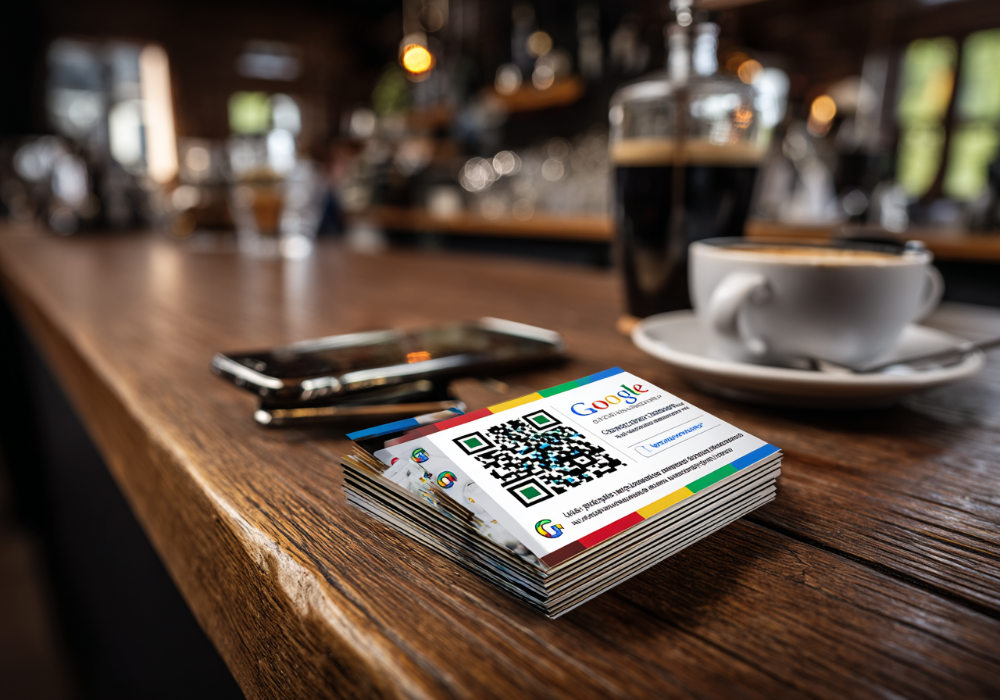In today’s digital age, businesses continually seek effective strategies to enhance customer interactions. A pivotal question they often ask is, how do I use online marketing to improve customer engagement? This comprehensive guide delves into various online marketing techniques that can significantly boost customer engagement, foster stronger relationships and drive business growth.
Understanding Customer Engagement
Before exploring specific strategies, it’s essential to grasp what customer engagement entails. It refers to the emotional connection and interactions between a customer and a brand. High engagement indicates that customers are actively involved with your brand, leading to increased loyalty and advocacy.
Importance of Customer Engagement
Engaged customers are more likely to:
- Make Repeat Purchases: Loyal customers tend to buy more frequently.
- Provide Valuable Feedback: They offer insights that can help improve products or services.
- Advocate for Your Brand: Satisfied customers often recommend your brand to others.
Understanding how do I use online marketing to improve customer engagement is crucial for leveraging these benefits.
Leveraging Social Media Platforms
Social media has revolutionised the way brands interact with their audiences. It offers a direct channel for engaging customers, sharing content, and building community.
Building a Strong Social Media Presence
To effectively use social media for engagement:
- Choose the Right Platforms: Focus on platforms where your target audience is most active.
- Consistent Branding: Maintain a uniform brand voice and aesthetic across all channels.
- Regular Posting Schedule: Keep your audience engaged with consistent and timely posts.
Encouraging User-Generated Content
User-generated content (UGC) involves customers creating content related to your brand. This not only provides authentic material but also fosters community.
- Create Hashtag Campaigns: Encourage customers to share experiences using a branded hashtag.
- Feature Customer Stories: Showcase user content on your official channels to build trust and credibility.
By implementing these strategies, you can effectively address the question, how to use online marketing to improve customer engagement through social media.
Personalising Email Marketing Campaigns
Email marketing remains a powerful tool for direct communication with customers. Personalisation can significantly enhance its effectiveness.
Segmenting Your Email List
Divide your email list based on:
- Demographics: Age, location, gender, etc.
- Purchase History: Tailor recommendations based on past purchases.
- Engagement Level: Identify active vs. inactive subscribers.
Crafting Personalised Content
Personalised emails can include:
- Product Recommendations: Suggest items based on browsing or purchase history.
- Exclusive Offers: Provide special deals to loyal customers.
- Birthday Greetings: Send personalized messages on special occasions.
Personalized email marketing directly addresses how to use online marketing to improve customer engagement by making customers feel valued and understood.
Creating Valuable Content
Content marketing focuses on creating and distributing valuable, relevant content to attract and retain a clearly defined audience.
Developing a Content Strategy
To create engaging content:
- Understand Your Audience: Research their interests, challenges, and preferences.
- Set Clear Objectives: Define what you aim to achieve with your content.
- Choose Appropriate Formats: Blogs, videos, podcasts, infographics, etc.
Utilising Various Content Formats
Diversify your content to cater to different preferences:
- Blog Posts: In-depth articles on industry topics.
- Videos: Tutorials, behind-the-scenes, product demos.
- Infographics: Visual representations of data or processes.
By delivering valuable content, you address the query, “How do I use online marketing to improve customer engagement?” by providing information that resonates with your audience.
Implementing Chatbots and AI
Artificial Intelligence (AI) and chatbots can enhance customer interaction by providing instant responses and personalised experiences.
Benefits of Chatbots
- 24/7 Availability: Assist customers outside of business hours.
- Instant Responses: Reduce wait times for customer enquiries.
- Handle Multiple Queries: Manage several conversations simultaneously.
Personalising Customer Interactions with AI
AI can analyse customer data to:
- Recommend Products: Suggest items based on user behaviour.
- Predict Needs: Anticipate customer requirements and offer solutions proactively.
- Enhance User Experience: Provide tailored content and offers.
Integrating AI and chatbots is a modern approach to answering how to use online marketing to improve customer engagement by streamlining communication and personalisation.
Utilising Data Analytics
Data analytics allows businesses to understand customer behavior and preferences, leading to more informed marketing decisions.
Tracking Customer Behaviour
Use analytics tools to monitor:
- Website Traffic: Identify popular pages and user navigation patterns.
- Engagement Metrics: Measure likes, shares, comments, and time spent on content.
- Conversion Rates: Assess the effectiveness of marketing campaigns in generating sales or leads.
Using Data to Improve Engagement
With insights from analytics, you can:
- Refine Content Strategy: Focus on high-performing topics and formats.
- Segment Your Audience: Deliver targeted messaging based on user actions.
- Optimise Campaigns: Adjust timing, messaging, and platforms for better results.
Ultimately, leveraging data analytics helps answer the question of how to use online marketing to improve customer engagement by ensuring every interaction is intentional and informed.
Investing in Local SEO and Google Business Profile
For small businesses or those targeting specific regions, local SEO is a powerful engagement tool.
Optimising for Local Searches
To increase engagement locally:
- Claim and Optimise Your Google Business Profile: Keep business details accurate and up to date.
- Use Local Keywords: Include town or city names in your content and metadata.
- Encourage Reviews: Engage with customers by responding to reviews promptly.
Engaging with Local Audiences
Connect with your local audience by:
- Hosting Community Events: Promote local initiatives via your website and social media.
- Publishing Localised Content: Blog about local trends or case studies.
- Creating Location-Based Offers: Share exclusive deals for specific areas.
A strong local SEO presence contributes directly to how to use online marketing to improve customer engagement, especially for businesses with a physical footprint.
Enhancing Mobile Experience
With more users browsing on mobile, your website must be mobile-optimised.
Mobile-Responsive Design
Ensure your site:
- Adapts Seamlessly: Layouts should scale to different screen sizes.
- Loads Quickly: Compress images and streamline code.
- Is Easy to Navigate: Use large buttons and minimal clutter.
Mobile Engagement Tactics
- SMS Marketing: Send personalised offers directly to mobile users.
- Mobile Push Notifications: Alert users to new content or deals.
- Mobile-Friendly Forms: Make sign-ups and enquiries fast and intuitive.
Prioritising mobile UX addresses a major part of how I use online marketing to improve customer engagement, especially for audiences on the go.
Running Targeted Paid Advertising Campaigns
Paid ads can reach your ideal customers quickly, enhancing engagement.
Creating Targeted Ad Campaigns
To maximise ROI:
- Define Your Audience: Use demographics, interests, and behaviours.
- Craft Compelling Ad Copy: Speak to your audience’s needs.
- Use Engaging Visuals: Catch attention and support your message.
Retargeting for Continued Engagement
Use retargeting to:
- Re-Engage Past Visitors: Remind them of products or abandoned carts.
- Upsell or Cross-Sell: Recommend related items post-purchase.
- Share New Content: Promote blog posts or offers to returning users.
This approach strengthens your ability to answer how I use online marketing to improve customer engagement, especially when trying to stay top of mind.
Encouraging Feedback and Interaction
Engagement is a two-way street. Inviting feedback shows customers you care.
Collecting Feedback
- Surveys and Polls: Gain insight into user preferences.
- Review Requests: Ask for honest reviews post-purchase.
- Comment Sections: Allow and respond to comments on blogs or videos.
Responding to Engagement
- Reply Promptly: Acknowledge comments and questions.
- Highlight User Suggestions: Implement ideas and give credit.
- Show Appreciation: Thank users for participation or loyalty.
By creating dialogue, you’re living out the answer to how do I use online marketing to improve customer engagement, not just explaining it.
Combining Marketing Channels
True engagement happens across multiple touchpoints.
Integrating Email, Social, and Content
- Repurpose Content: Turn a blog post into social snippets and an email series.
- Unified Messaging: Keep your tone and visuals consistent across platforms.
- Cross-Promote: Drive traffic between platforms (e.g., blog to YouTube).
Tracking Cross-Channel Success
Use tracking tools to:
- Monitor Attribution: Know which channels drive the most engagement.
- Adjust Budgets Accordingly: Invest in the most effective platforms.
- Fine-Tune Messages: Personalise based on platform behaviours.
I use this comprehensive approach to online marketing to improve customer engagement and ensure that you connect everywhere your audience lives.
Mastering Customer Engagement Through Online Marketing Strategies That Work
Engagement must be intentional, data-driven, and user-focused to thrive in today’s competitive landscape. Online marketing provides the tools to connect with customers meaningfully and consistently. Whether you’re refining content, investing in SEO, or launching email campaigns, every effort should aim to build trust and encourage interaction.
Remember, “How do I use online marketing to improve customer engagement” isn’t just a question-it’s a strategy that, when applied well, results in stronger relationships, better conversions, and long-term business growth.

















